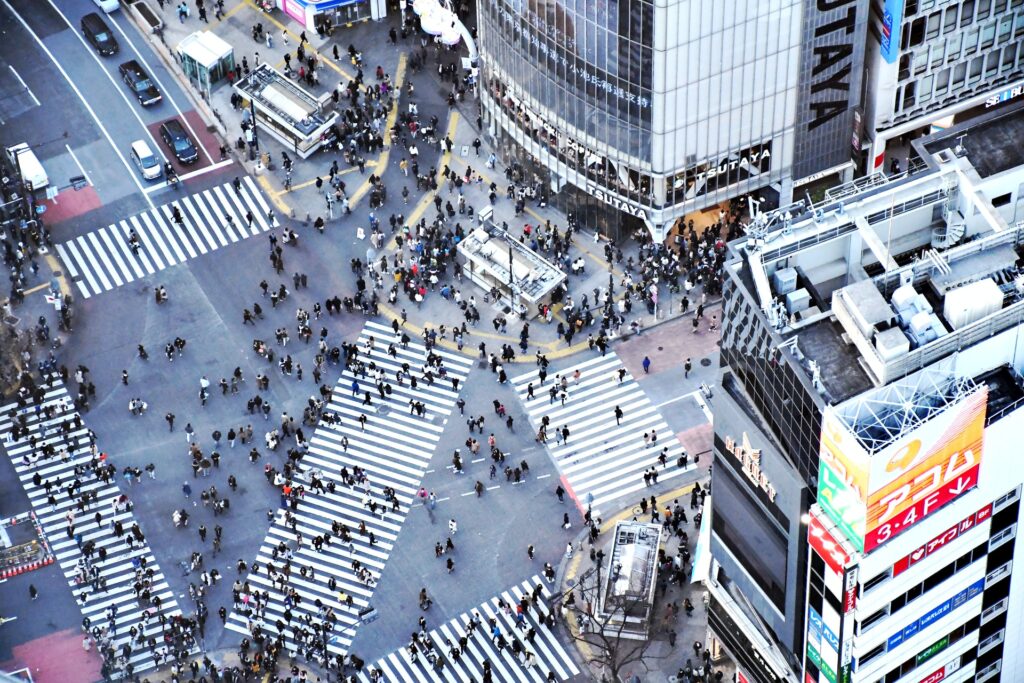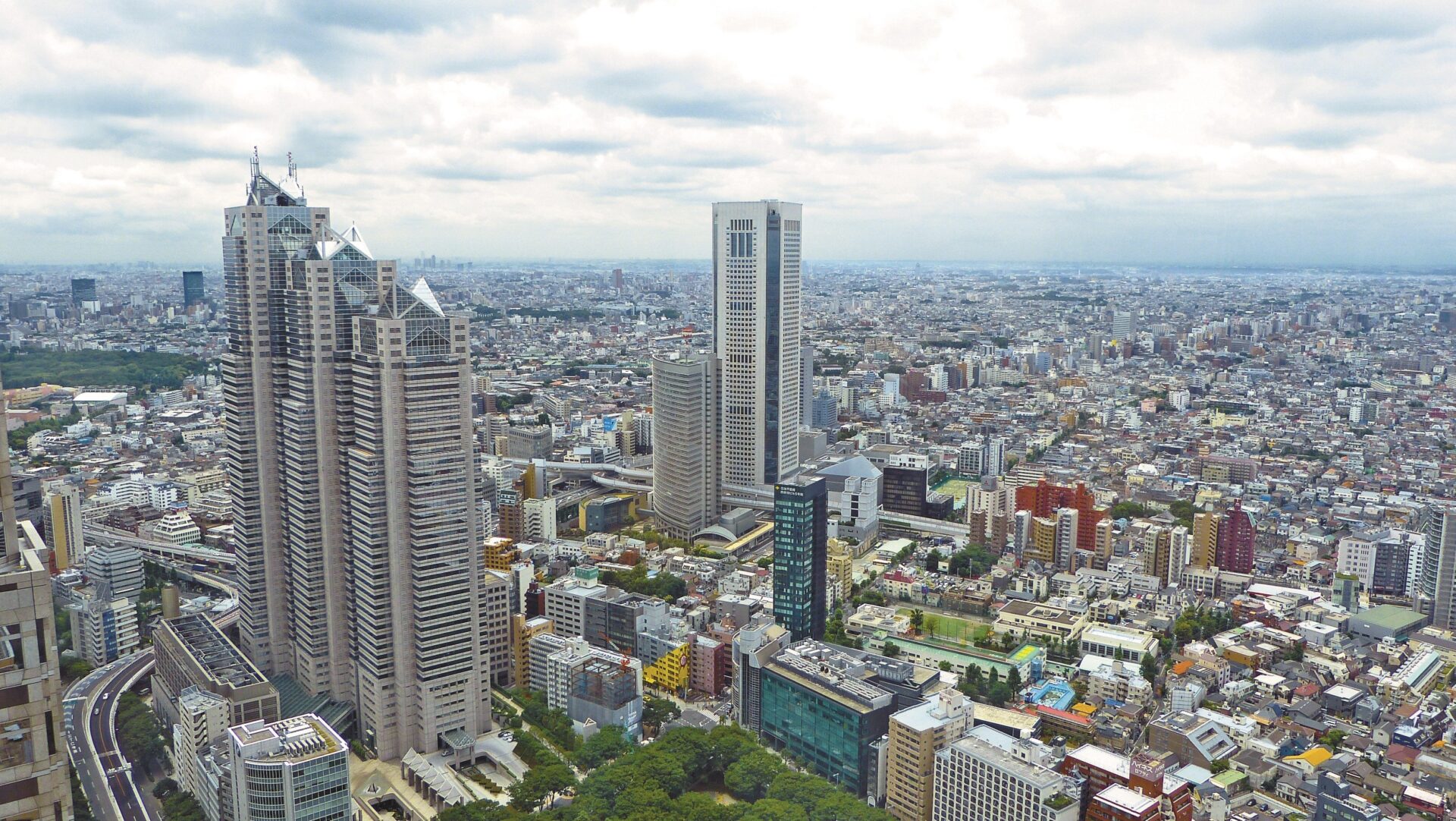Deciding what to do and see in Tokyo depends on how much time you have—and for your sake, we hope you have a month.
The city’s streets can feel like a game of soccer played at hyper-speed, while calmer attractions range from temples, museums, gardens, origami classes, and bohemian sojourns. Tokyo has more than enough going on to put you in a tizzy, so a few words of advice: Arrive with a game plan and prepare to get a bit lost along the way, in a good way. Here, the very best things to do in Tokyo.

Yayoi Kusama Museum
In a suburban part of Shinjuku, Tokyo a smooth white building rises five stories high—a museum completely devoted to the works of Yayoi Kusama. The building looks slim, but it houses a bulk of the larger-than-life and avant-garde artist’s pieces, including a new installation of her “infinity room” series (an Instagram sensation which, in the past, drew hundreds of thousands of visitors in stateside exhibitions) to polka-dotted paintings and sculptures. Currently, to reduce the spread of coronavirus, entry is limited to 40 people per 90-minute admission slot.

Shinjuku Gyoen National Garden
Fancy a stroll in a Japanese garden? Get that and more at Shinjuku Gyoen Tokyo. In addition to native, traditional gardens, the 144-acre park pockets French Formal and English Landscape gardens, all of which are worth the modest entrance fee. Landmarks are stunning and impossible to forget, like a Taiwan Pavilion perched along a serene pond. Formerly an imperial garden, it became a national garden after World War II—so you can trust that this precious plot is always beautifully maintained. Don’t miss cherry blossom season.

Senso-Ji
Tokyo may not have as many temples as Kyoto, but Senso-Ji isn’t the city’s most popular just by default. The atmosphere alone here is one for the bucket list. Senso-ji, the temple itself, is at the end of the shopping street, while a recently renovated five-story pagoda stands to the left (ranking in as the second tallest pagoda in Japan). Japanese visitors flutter around a large cauldron in front of the temple where incense burned inside is said to benefit good health. Travelers keen to avoid crowds should arrive early, but even tourists that are remotely interested in Japanese culture will find something to appreciate here.

Tsukiji Market
In October 2018, the world’s largest fish market, Tsukiji, shut down after 83 years and re-opened in two distinct parts. At the original location, it’s pretty much business as usual, with street-food stalls serving up everything from seared tuna to uni sandwiches in squid-ink sticky buns. Just down the road at Toyosu Market, meanwhile, you can taste fresh raw fish in a series of sushi bars and peek in on the auctions (formerly held at Tsukiji) and live fish scales from a second-story viewing station. You can also tour a large green space on the rooftop, which affords views of the Tokyo skyline.

Shibuya Crossing
Anyone remotely impressed that Tokyo is the most populated city in the world should visit the world’s busiest intersection at Shibuya Crossing. Massive video screens flashing advertisements tower above every corner as black-suited salarymen, wide-eyed tourists, and bag-toting shoppers wait and cross in concert. The feeling is oddly soothing, a reminder that whatever our disparate paths in life, they all have a tendency to cross at one time or another.
The best time to go is at dusk, one of the scramble’s peak times and in its most flattering light. The recently opened Shibuya Scramble Square tower above Shibuya station offers a birds’ eye view of the famous crossing, along with panoramic vistas of the city from the Shibuya Sky rooftop observatory, perched 230 meters above street level.

Golden Gai
This clutch of narrow streets, tucked in the shadows of Shinjuku, is lined with hundreds of low-slung dive bars with just a handful of seats, all recalling post-war debauchery. There’s no order to the scene, and considering that bars are stacked—some at ground level, while some are located up steep, svelte staircases—it’s just as fascinating to wander aimlessly as it is to arrive with a game plan.
Recently, the area has gained popularity among visitors, so don’t be surprised if several of your fellow tipplers hail from abroad. Many of the bars frequented by locals require a seating charge, so check before ordering a drink. Albatross and Ace’s are welcoming spaces that cater to a mixed crowd, and there’s no cover charge.

Nakameguro
It’s okay to visit the artsy neighborhood, Nakameguro, just to see its seasonal appeal as one of the most picture-perfect spots for cherry blossoms in Spring. However, stick around these charming streets and you’ll find a hip collection of independent cafes and boutiques that offer a laid-back alternative to the city’s buzzing hubs. Sakura trees hug the Meguro River in Nakameguro’s center, blossoming as they lean over the sloped, canal-like walls surrounding the water.
Once you’ve taken a moment to smell the blossoms (and fill your phone with pictures), you’ll find an array of independent boutiques and cafés branching off along narrow streets in either direction. Head to the corner-side Onibus Coffee, which serves single-origin espresso, and stop at SML, a boutique stocking delightful crafts (especially ceramics) made by Japanese artists.

Nezu Museum
This serene museum in the Aoyama district, redesigned by celebrated architect Kengo Kuma, is a contemporary temple for traditional art. A long, covered outdoor path alongside bamboo-clad walls serves as a minimalist entrance, but once inside, double-height interiors and glass walls stretch over 40,000 square feet while keeping the experience intimate.
And while the museum mixes contemporary design and traditional art on the inside—over 7,400 pieces—the outside counts, too: The property is home to a stunning private garden that’s worth the visit all on its own. The bulk of the museum’s art was once the private collection of Nezu Kaichirō, the president of Japan’s Tobu Railway. Since the midcentury, the collection grew and now comprises over 7,400 pieces.
These are just some of the many things to do in Japan.


